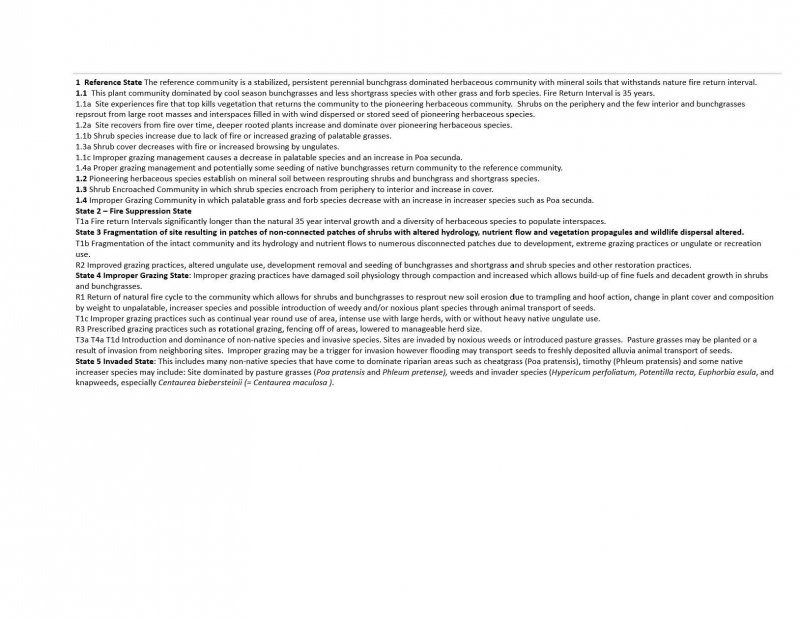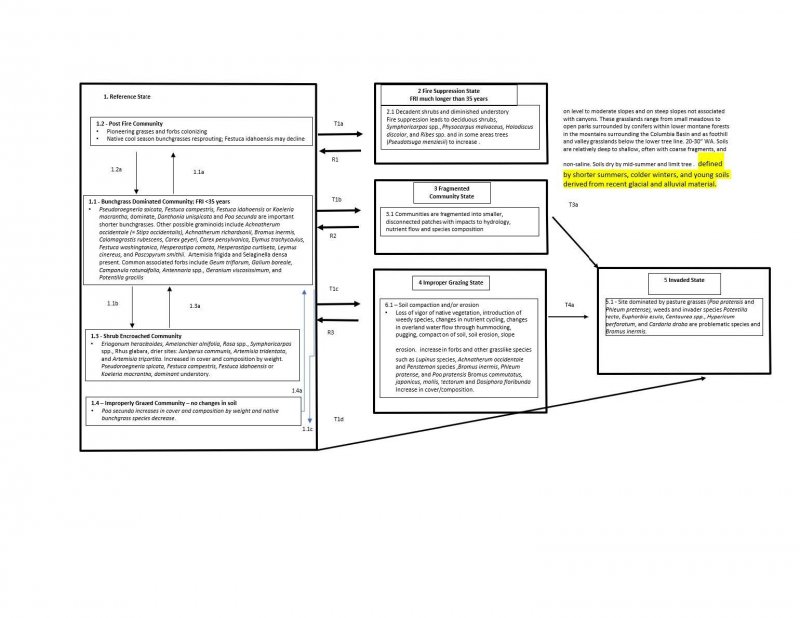
Natural Resources
Conservation Service
Ecological site R043AY507WA
Cool-Mesic Dry-Xeric Loamy Low AWC (PSSP/FEID/ACNE)
Last updated: 10/15/2020
Accessed: 12/21/2025
General information
Provisional. A provisional ecological site description has undergone quality control and quality assurance review. It contains a working state and transition model and enough information to identify the ecological site.
MLRA notes
Major Land Resource Area (MLRA): 043A–Northern Rocky Mountains
Major Land Resource Area (MLRA): 043A–Northern Rocky Mountains
Description of MLRAs can be found in: United States Department of Agriculture, Natural Resources Conservation Service. 2006. Land Resource Regions and Major Land Resource Areas of the United States, the Caribbean, and the Pacific Basin. U.S. Department of Agriculture Handbook 296.
LRU notes
Major land resource area (MLRA): 043A-Northern Rocky Mountains
Modal LRU – 43A01 - Okanogan Plateau
This LRU is composed predominantly of glaciated mountains and foothills. The soils tend to be loamy to sandy andisols, inceptisols, and mollisols with mixed or distinct ash surfaces. Recent alluvium, till, outwash and residuum from granitic or metamorphic rock are the dominant parent materials. Soil climate is a frigid or cryic temperature regime and xeric moisture regime with average annual precipitation around 450 mm (18 inches).
Others where occurring: 43A03 Columbia-Colville Valleys
44A01 Spokane-Rathdrum Outwash Plains
Classification relationships
This ES group fits into the National Vegetation Standard’s Central Rocky Mountain Foothill Grassland Group and is most closely related to Washington State’s Natural Heritage Program’s Northern Rocky Mountain Lower Montane, Foothill, and Valley Grassland. (Compare to previous Washington range sites: R043AY201WA, DRY STONY 16-24 PZ and R043AY202WA, STONY 16-24 PZ)
Ecological site concept
Ecological Site Concept:
This ES is found on well drained, loamy sites with mesic temperatures and a plant community dominated by grass species such as bluebunch wheatgrass, Idaho fescue and columbia needlegrass. The ESD is distinguished by having available water capacity of <3 inches total within 40 inches of the surface.
Table 1. Dominant plant species
| Tree |
Not specified |
|---|---|
| Shrub |
(1) Symphoricarpos albus |
| Herbaceous |
(1) Pseudoroegneria spicata |
Click on box and path labels to scroll to the respective text.

